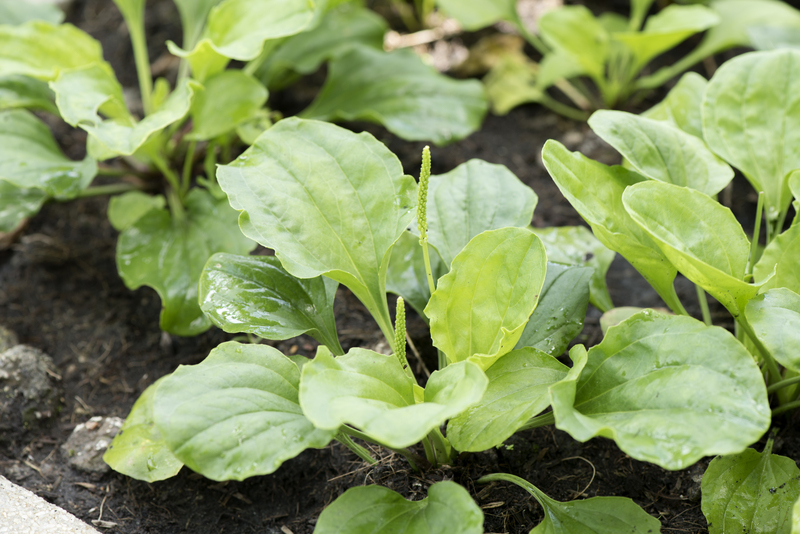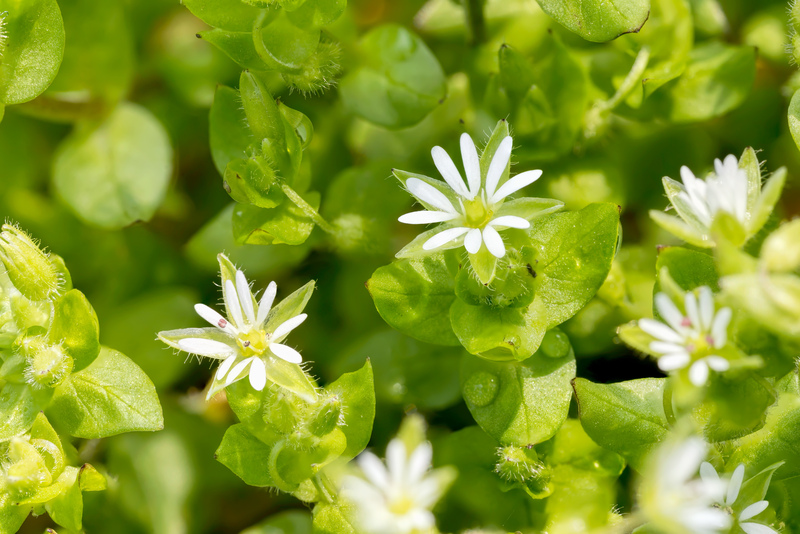Discover the Best Techniques for Shaping Impressive Hedges
Posted on 19/09/2025
Discover the Best Techniques for Shaping Impressive Hedges
Are you dreaming of a garden that makes passersby stop and stare? Impressively shaped hedges can dramatically boost your landscape's appeal, providing structure, privacy, and a distinct sense of artistry. Whether you're new to gardening or a seasoned pro seeking fresh inspiration, perfecting the craft of hedge shaping will set your outdoor space apart. In this comprehensive guide, we'll explore the finest hedge-shaping techniques, from basic trimming methods to advanced topiary artistry, and ensure your green barriers look impeccable all year round.

Why Shape Your Hedges?
Before diving into the best methods, let's quickly highlight why it's important to shape your hedges:
- Aesthetic Value: Well-shaped hedges create elegant boundaries and striking focal points in your landscape design.
- Healthier Growth: Regular pruning encourages fuller, denser growth and reduces the risk of disease.
- Privacy and Security: Shaped hedges act as living fences, enhancing privacy and deterring intruders.
- Wildlife Habitat: Properly maintained hedges offer sanctuary to birds and beneficial insects.
Simply put, shaping impressive hedges is both an art and a science, offering endless rewards for gardeners.
Understanding Hedge Types for Perfect Shaping
Your choice of hedge species greatly impacts your shaping success. Some respond better to attention and sculpting than others. Here are common options:
- Boxwood (Buxus): Famous for tight, formal shapes--ideal for geometric and topiary forms.
- Yew (Taxus): Exceptionally durable and versatile, perfect for traditional British-style hedges.
- Privet (Ligustrum): Fast-growing, suitable for privacy screens but requires regular shaping.
- Laurel (Prunus laurocerasus): Large leaves, excellent for thick privacy walls, best for informal shapes.
- Lonicera (Honeysuckle): Hardy and resilient, but best for informal or natural-looking hedges.
- Beech (Fagus sylvatica): Deciduous, stunning autumn colors, great for both formal and natural shapes.
Tip: Always research the growth habit and foliage density of your hedge plants before choosing your shaping strategy.
The Best Tools for Shaping Hedges
Achieving excellent results requires the right tools. Here's what every hedge artist needs:
- Hand Shears: For precise cuts and tight control--it's the best tool for detailed work and topiary shaping.
- Electric or Gas Hedge Trimmers: Great for long, straight runs and larger hedges. Choose a lightweight, easy-to-handle model.
- Loppers: Essential for removing thicker branches or rejuvenating old hedges.
- Pruning Saw: For the occasional big cut or reshaping of mature woody stems.
- String and Stakes: To ensure perfectly straight lines--especially critical for formal designs.
- Protective Gloves and Safety Glasses: Never overlook personal safety during hedge trimming!
Remember to keep all cutting blades sharp--dull blades make uneven cuts and stress the plant.
When is the Best Time to Shape Hedges?
Timing can make or break your hedge aesthetics. Different species respond best at specific periods:
- Deciduous Hedges: The ideal time for shaping is late winter to early spring (before new leaves appear or just after a light first flush of growth).
- Evergreen Hedges: Shape myrtle, boxwood, and yew in late spring or early summer, after the risk of frost.
- Flowering Hedges: Trim immediately after blooming to preserve next season's flower buds.
Pro Tip: In hot climates, avoid pruning in peak summer to minimize stress and leaf scorch. In cold areas, avoid late autumn trimming, as tender new growth could be damaged by frost.
Essential Techniques for Achieving Impressive Hedge Shapes
Basic Hedge Trimming
The foundation of impressive hedge shaping rests on proper technique. Here's the essential process:
- Establish Your Shape: Use string lines, stakes, and chalk to map out the desired lines and curves.
- Begin at the Top: Always start with the upper edge and gradually move down--this avoids creating a top-heavy hedge.
- Work from Bottom Up When Shaping Sides: For straight sides, start at the bottom and sweep upwards in long, smooth strokes.
- Maintain a Taper: Keep the base wider than the top for good light penetration--vital for lower leaf density and hedge health.
- Step Back to Assess: Periodically examine your progress from a distance to spot any unevenness.
Fun Fact: This slightly trapezoidal shape is called a "batter," and it's crucial for lush, healthy hedges.
Advanced Topiary Sculpting
Take your hedge sculpting skills to the next level with topiary--the ancient art of creative shaping. Here's how:
- Choose Your Subject: Classic topiary includes balls, cones, spirals, animals, or custom geometric designs.
- Use Frames for Complex Shapes: For intricate topiary, wire frames help guide your cuts and maintain symmetry as the plant matures.
- Prune Regularly: Light, frequent trims encourage fullness and crisp outlines. Don't wait for extensive overgrowth.
- Refine Details: Use hand shears for finishing touches--careful, small snips make all the difference!
- Stay Patient: Topiary is slow art--the best shapes develop over years, not months.
Techniques for Formal vs. Informal Hedges
- Formal Hedges: Defined by clean, beveled edges and geometric precision. Use guiding lines, templates, and measure frequently.
- Informal Hedges: These strive for a natural look--gentler curves, staggered heights, and softer lines. Shape using hand shears and allow for a less rigid silhouette.
Creative Shaping Ideas for Modern Landscapes
- Multi-Level Tiers: Stagger heights for a dramatic terraced effect.
- Waves and Curves: Ditch the straight line for flowing organic shapes.
- Knot Gardens: Intertwine different hedge species for intricate living patterns.
- Feature Arches and Tunnels: Use frames to inspire archways and green tunnels--stunning entrances or secret paths.
- Lettering or Symbols: For a personalized touch, shape initials or symbols into your living canvas.
Common Mistakes to Avoid When Shaping Hedges
- Cutting Unevenly: Always use string lines or guides for straight and symmetrical shapes.
- Neglecting the Taper: A straight-sided hedge often becomes thin and leafless at the base--always keep the top narrower.
- Over-Pruning: Severe cuts can shock the hedge and reduce vigor. It's better to shape gradually and regularly.
- Using Dull Blades: Ragged cuts leave the shrub vulnerable to disease, and blunt tools make shaping exhausting.
- Ignoring Hedge Health: Water, fertilize, and mulch regularly. Healthy hedges are always the most impressive.
Maintaining the Shape and Health of Your Hedges
Regular Trimming Calendar
Set a routine to keep your hedges looking their best:
- Formal Hedges: Trim two to three times per year, especially during peak growing months.
- Informal Hedges: Once or twice a year is often sufficient, focusing on removing straggly growth.
- Topiary: Light shaping every 4-6 weeks during the growing season produces the finest definition.
Feeding and Watering
- Fertilize: Apply a balanced, slow-release fertilizer in spring for strong, lush growth.
- Mulch: A layer of organic mulch preserves moisture and replenishes nutrients.
- Water: Especially important in the first year, during drought, or after heavy pruning sessions.
Inspect for Pests and Diseases
- Look for Yellowing Leaves, Wilting, or Dieback: Early action can save a hedge from devastating pests or disease outbreaks.
- Treat Promptly: Use organic or chemical controls as needed, and always remove infected material.
Eco-Friendly and Modern Hedge Shaping Tips
More gardeners are choosing sustainable, wildlife-friendly hedging techniques:
- Hand Trimming: Saves energy and creates less noise pollution.
- Mixed Species Hedges: Boost biodiversity and create resilient living screens.
- Leave Gaps or Open Sections: Allow birds and beneficial insects to thrive within your hedges.
Bonus: Many native species are naturally well-suited to easy shaping and require minimal care.

Frequently Asked Questions about Hedge Shaping
-
How often should I trim my hedges?
For formal hedges, trim 2-3 times a year. For informal hedges, once is often enough. Topiary requires more frequent attention. -
What is the best tool for shaping hedges?
For large or straight hedges, power trimmers are best. For details and topiary, hand shears are essential. -
When is the safest time to shape flowering hedges?
Always trim flowering hedges right after they finish blooming to avoid cutting off buds for next year. -
Can I turn an old, overgrown hedge into a topiary?
Yes, but it takes patience. Hard prune in winter or early spring, gradually sculpting the desired shape over several years.
Conclusion: Mastering the Art of Shaping Impressive Hedges
Unlocking the secrets to beautifully shaped, impressive hedges is an investment in your garden's future. By selecting the right plant species, using appropriate tools, and mastering fundamental trimming methods, you'll produce living walls that are both works of art and practical garden assets. Whether your goal is formal perfection, whimsical topiary, or a naturalistic border, these best hedge shaping techniques will help you succeed.
Remember: patience and consistency yield the finest hedges. With each season, your skills will grow--as will your admiration for the living architecture you create.
Ready to transform your landscape? Tackle your first hedge shape today, and watch your garden dreams come to life!

